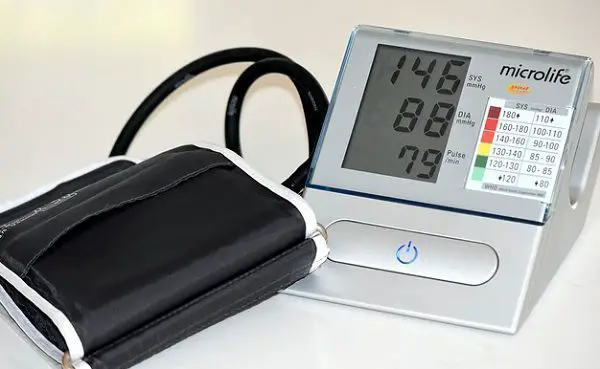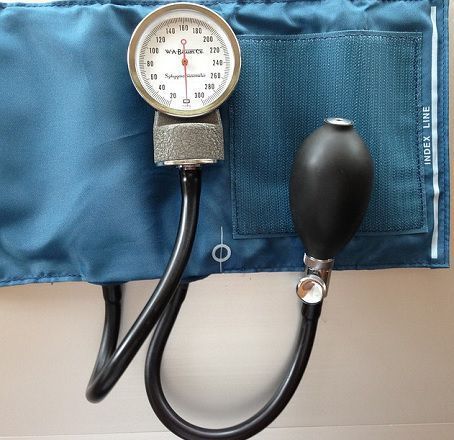When the muscles of the heart contracts it is known as systolic, whereas when the heart muscles relax it is known as diastolic. At the time of systole the blood pressure increases, but at the time of diastole, the blood pressure decreases.
These are the two types of blood pressure, controlled by the beating of the one’s heart. The heart is the organ which provides oxygenated blood to all tissues, organs and other body parts. For pumping the blood the heart contracts and relax continuously and thus further supply blood to the body, this is called the cardiac cycle. One cardiac cycle gets complete in 0.8 seconds and 75 beats per minute are average heartbeat rate.
This cycle is accomplished by the chambers present in the blood, like atria and ventricles, the two artia plays a role in contracting and further ejects the blood into ventricles, the ventricles contract to send blood out of the heart. Again the deoxygenated blood gets in from the right side of the heart and gets oxygen from the lungs, and then again the oxygenated blood is pumped from the left side of the heart.
The measurement of the blood pressure is done by sphygmomanometer, but nowadays more advanced techniques are also available. The measurement is done in millimetres of mercury (mm Hg). For example, if the resting blood pressure is 120/80 mm Hg, the first one denotes systolic and the second one indicates the diastolic, while the difference between the two numbers that is 40 is the pulse pressure.
The pulse pressure act as the predictor of the person’s cardiac conditions, especially for the old age people. People with diabetes, high cholesterol, kidney disease are generally at higher risk. Secondly, the lifestyle also brings the risk of such conditions. So, in this content, we will be differentiating the two types of blood pressures with a summary on them.
Content: Systolic Vs Diastole
Comparison Chart
| Basis for Comparison | Systolic Blood Pressure | Diastolic Blood Pressure |
|---|---|---|
| Meaning | When the blood pressure is highest or when the heart beats (heart muscles contracts), the systolic pressure is generated. | When the blood pressure is minimum, it is called as diastolic blood pressure.Diastolic pressure is produced between the beats or at the resting of heart muscles between the beats, this is the time of refilling the blood. |
| Blood pressure inside the arteries | Maximum. | Minimum. |
| Occurs | Systolic stage occurs when the left ventricle gets contracted. | Diastolic stage occurs when the left ventricle gets relaxed. |
| Blood vessels | Contracts. | Relaxed. |
| Normal range | 90-120 mm Hg in adults; 100 mm Hg(6-9 years); 95 mm Hg (infants). | 60-80 mm Hg; 65 mm Hg (6-9 years); 65 mm Hg (infants). |
| Changes with the age | Increases. | Decreases. |
| Fluctuations | Undergoes fluctuations prominently during great working, the force of the heart working. | Few fluctuations are observed, but when the diastolic pressure increases, it indicates about the heart failure. |
| Blood pressure readings | The higher number is systolic readings, and monitoring is essential with the increasing age. | The lower number is the diastolic pressure, and monitoring is important at the younger age. |
Definition of Systolic Blood Pressure
The activity of the heart, when it beats, which ejects blood to different part of the body through arteries, due to which the pressure is created on the blood vessels, this pressure or force is called as systolic blood pressure.
There are two types of systolic blood pressure, which are high systolic blood pressure and low systolic pressure. High systolic blood pressure occurs when the person is exercising, at high stress. At this time the heart beats more strongly than the normal and the contraction of the cardiac muscles increases and therefore systolic pressure increased.
In case of low systolic blood pressure where the heartbeat rate gets lower than normal, this is called as systolic hypotension. It can result in dizziness, organ failure, etc.
The average systolic blood pressure is measured below 120 mm Hg. The range between 120-129 is considered as inflated, while the range between 130-139 is said as stage 1 of high blood pressure or hypertension, the most is the critical condition is the stage 2 hypertension which is at 140, whereas the 180 is the more hypertensive stage and one should immediately call the doctor.
Definition of Diastolic Blood Pressure
In the case of diastolic blood pressure, the force is exerted by the blood between the heartbeats of arteries, it is the time when the heart is pumping the blood inactively to the arteries.
In the systolic pressure the cardiac ventricles get contract, but here in the diastolic stage the ventricles male themselves relaxed and got refilled with the blood. The period of ventricular relaxation is called the ‘diastole’.
Key Differences Between Systolic and Diastolic Blood Pressure
Given below points will display that how both of the blood pressure differs from each other:
- When the blood pressure is highest or when the heart beats (heart muscles contracts), the systolic pressure is generated, whereas when the blood pressure is minimum, it is called as diastolic blood pressure. Diastolic pressure is produced between the beats or at the resting of heart muscles between the beats; this is the time of refilling the blood.
- Blood pressure inside the arteries is maximum at the time of systolic pressure while it is minimum at the time of diastolic.
- When the left ventricle and blood vessels get contracted, it is the systolic stage, and when the left ventricle and the blood vessels get relaxed, it is called the diastolic phase.
- The normal range of the systole is 90-120 mm Hg in adults; 100mm Hg(6-9 years); 95 mm Hg (infants), on the other hand, 60-80 mm Hg; 65 mm Hg (6-9 years); 65mm Hg (infants) is the normal range in diastole.
- With the increasing age the systolic pressure increases, while the diastolic pressure decreases, and so it is advisable to monitor the pressure timely with the onset of age.
- Blood pressure readings can be checked by observing the numbers displayed on the screen of the Sphygmomanometer, the higher number is a systolic while, the lower number is diastolic pressure.
Conclusion
From the above article we can say that when the heart muscle relaxes and contract, we use the terms systole and diastole. The balance between them (systole and diastole) measures the person’s health and his cardiac conditions. With the time one should visit a doctor to take follow up about their medical conditions, as these can be life-threatening too if ignored.



Leave a Reply